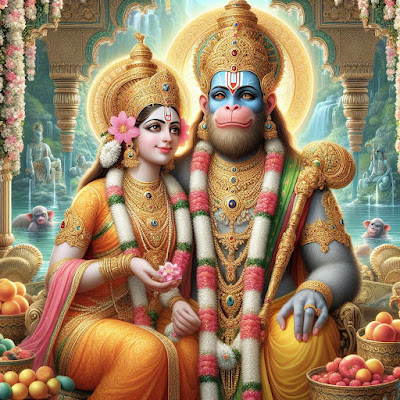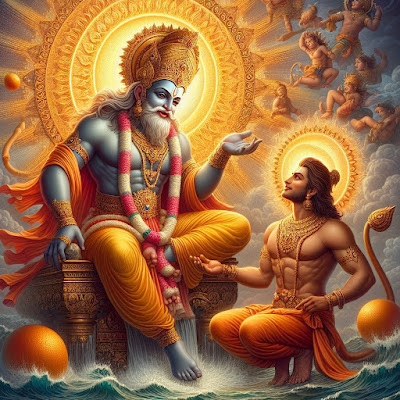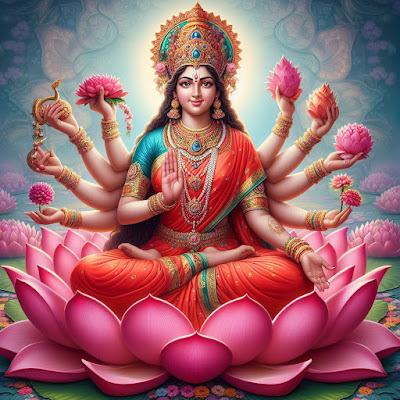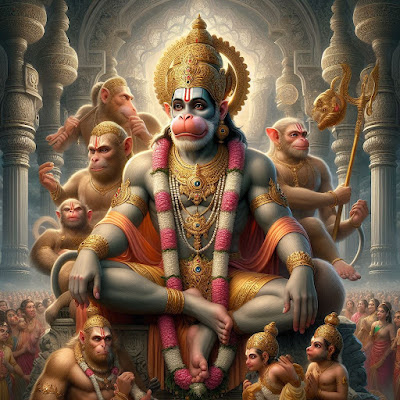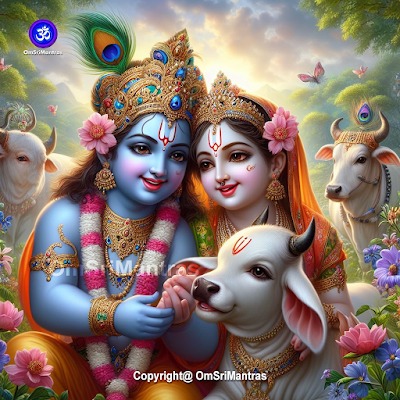The Enigmatic Tale of Lord Hanuman’s Marriage
Lord Hanuman, the epitome of devotion and celibacy in Hindu mythology, is often celebrated for his unwavering dedication to Lord Rama. Known as a lifelong Brahmachari (celibate), Hanuman’s marital status has been a subject of curiosity and folklore. While the predominant belief is that Hanuman never married, some intriguing tales suggest otherwise.The Legend of Suvarchala
This marriage was unique as it was formed without any worldly desires or intentions, allowing Hanuman to remain a celibate while fulfilling the criteria to receive the complete education from Surya. The Hanumanatha Mangalashtakam, a revered verse, even depicts Hanuman as the consort of Suvarchala.
Nava Vyakarana (the nine grammars)
The teachings that led to the marriage of Lord Hanuman and Suvarchala are deeply rooted in the pursuit of knowledge. According to the legend, Hanuman, who is revered for his wisdom and intellect, was a devoted student of Surya, the Sun God. Hanuman desired to learn all forms of knowledge from Surya, including the Vedas and other sacred scriptures.However, there was a significant teaching that Hanuman could not receive due to his celibate status—Nava Vyakarana (the nine grammars). Surya explained that this particular knowledge was reserved for those who were married, as it was traditionally taught only to householders.
The Trimurti—Brahma, Vishnu, and Shiva—recognized the importance of Hanuman acquiring this knowledge for the future plans they had. To ensure that Hanuman could receive the complete education without compromising his celibacy, they requested Surya to create a partner for him who was also a celibate.
Surya then created Suvarchala, an eternal Brahmacharini (celibate), from his divine rays. Suvarchala was destined to marry Hanuman, allowing him to become a ‘Grihastha’ (householder) in the ritualistic sense, thus fulfilling the criteria to learn Nava Vyakarana without affecting his vow of celibacy.
This marriage was not based on romantic or worldly desires but was a divine arrangement to facilitate Hanuman’s spiritual growth and learning. After marrying Suvarchala, Hanuman was able to learn Nava Vyakarana and continued to serve Lord Rama while maintaining his celibate life.
The story of Hanuman’s marriage to Suvarchala is a testament to the lengths one might go to in the pursuit of knowledge and the divine support that comes with such a noble quest. It also highlights the adaptability of spiritual practices to fulfill the needs of devotion and duty.
Temples and Folk Beliefs
In some regions, this story is so cherished that temples have been erected to honor Hanuman’s marital status. One such temple exists in the Khammam district of Telangana, The Great Bharat where Hanuman is depicted alongside Suvarchala.Analyzing the Authenticity
While these stories are captivating, they are not found in the mainstream texts like the Valmiki Ramayana or the Shri Ram Charit Manas. They are part of regional folklore and lesser-known scriptures like the Parashar Samhita. The marriage of Hanuman, therefore, remains a topic of debate and personal belief.Conclusion
The tale of Lord Hanuman’s marriage is a beautiful blend of devotion, duty, and the divine. It teaches us that the essence of spiritual learning can transcend conventional norms and that true devotion knows no bounds. Whether Hanuman was married or not, his life remains a guiding light for devotees around the world.This post offers a glimpse into the mystical narrative surrounding Lord Hanuman’s marriage, a story that bridges the gap between devotion and duty, and continues to fascinate believers and scholars alike.

